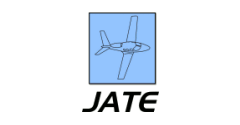Abstract
The purpose of this study was to analyze the frequency of general aviation (GA) airplane accidents and accident rates on the basis of aircraft certification to determine whether or not differences in aircraft certification rules had an influence on accidents. In addition, the narrative cause descriptions contained within the accident reports were analyzed to determine whether there were differences in the qualitative data for the different certification categories. The certification categories examined were: Federal Aviation Regulations Part 23 (Part 23), Civil Air Regulations 3 (CAR 3), Light Sport Aircraft (LSA), and Experimental-Amateur Built (E-AB). The accident causes examined were those classified as: Loss of Control (LOC), Controlled Flight into Terrain (CFIT), Engine Failure, and Structural Failure. Airworthiness certification categories represent a wide diversity of government oversight. Part 23 rules have evolved from the initial set of simpler design standards and have progressed into a comprehensive and strict set of rules to address the safety issues of the more complex airplanes within the category. E-AB airplanes have the least amount of government oversight and are the fastest-growing segment. The LSA category is a more recent certification category that utilizes consensus standards in the approval process. CAR 3 airplanes were designed and manufactured under simpler rules, but modifying these airplanes has become lengthy and expensive. The study was conducted using a mixed-methods methodology. A Chi-Square test was used for a quantitative analysis of the accident frequency among aircraft certification categories. Accident rate analysis of the accidents among aircraft certification categories involved an analysis of covariance (ANCOVA) test. The qualitative component involved the use of text mining techniques for the analysis of the narrative cause descriptions contained within the accident reports. The Chi-Square test indicated that there was no significant difference in the number of accidents among the different certification categories when either CFIT or Structural Failure was listed as cause. However, there was a significant difference in the frequency of accidents with regard to LOC and Engine Failure accidents. The results of the ANCOVA test indicated that there was no significant difference in the accident rate with regard to LOC, CFIT, or Structural Failure accidents. There was, however, a significant difference in Engine Failure accidents between E-AB and the other categories. The text mining analysis of the narrative causes of LOC accidents indicated that only the CAR 3 category airplanes had clusters of words associated with visual flight into instrument meteorological conditions. CAR 3 airplanes were designed and manufactured prior to the 1960s, and in most cases have not been retrofitted to take advantage of newer technologies that could help prevent LOC accidents. The study indicated that GA aircraft certification rules do not have a statistically significant effect on aircraft accidents except for LOC and Engine Failure. According to the literature, government oversight could have become an obstacle in the implementation of safetyenhancing equipment that could reduce LOC accidents. Oversight should focus on ensuring that E-AB aircraft owners perform a functional test that could prevent some of the Engine Failure accidents.
Recommended Citation
Anderson, Carolina L.
(2015)
"The Effects of Aircraft Certification Rules on General Aviation Accidents,"
Journal of Aviation Technology and Engineering:
Vol. 4:
Iss.
2, Article 7.
Available at: https://doi.org/10.7771/2159-6670.1104


